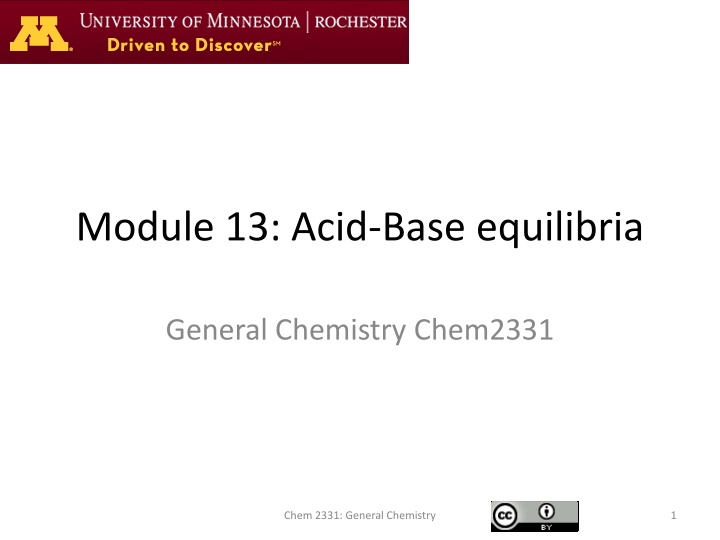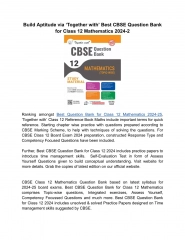
Acid-Base Equilibria and Electrolytes Overview
Explore acid-base equilibria principles, definitions, conjugate pairs, and the concept of electrolytes in aqueous solutions. Identify different types of acids, bases, and their properties. Understand the relationship between acids, bases, and water interactions.
Download Presentation

Please find below an Image/Link to download the presentation.
The content on the website is provided AS IS for your information and personal use only. It may not be sold, licensed, or shared on other websites without obtaining consent from the author. If you encounter any issues during the download, it is possible that the publisher has removed the file from their server.
You are allowed to download the files provided on this website for personal or commercial use, subject to the condition that they are used lawfully. All files are the property of their respective owners.
The content on the website is provided AS IS for your information and personal use only. It may not be sold, licensed, or shared on other websites without obtaining consent from the author.
E N D
Presentation Transcript
Module 13: Acid-Base equilibria General Chemistry Chem2331 Chem 2331: General Chemistry 1
Module 13 Module 13 Session 1 1. Video 1: Introduction to acids and bases 1. Some electrolytes ionize in water 2. Arrhenius and Bronsted definitions 3. Conjugate pairs 2. Video 2: 1. Types of acids: HX, Oxoacids HXO, RCOOH 2. Oxoacids: structure and oxidation state explains acidity 3. Multiprotic acids 3. Video 3: 1. Memorize strong acid and strong bases 2. Neutralization reactions and reactions in water of strong acids Chem 2331: General Chemistry 2
Electrolytes Electrolytes are substances that when dissolved in water they create charges Which of the following substances are electrolytes? a) NaS b) FeCl3 c) HNO3 d) PCl3 e) CS2 f) HCl g) KMnO4 h) NH3 Chem 2331: General Chemistry 3
Acid-Base definitions Arrhenius definitions (1880) Acid: A substance that produces H+ ions in aqueous solutions HCl is a covalent compound that doesn t contain ions. However, in water it ionizes completely. HCl (aq) H+ (aq) + Cl- (aq) The proton H+ is never found alone: H+ + H2O H3O+ (hydronium ion) Base: A substance that dissociates produces OH- ions in aqueous solutions NaOH (aq) Na+ (aq) + OH- (aq) NaOH is an ionic compound that contains ions. In water it ionizes completely. OH-hydroxyde ion Bronsted-Lowry definitions (1923) HCl (aq) + H2O H3O+ (aq) + Cl- (aq) Acid: proton (H+ ion) donor Base: proton (H+ ion) aceptor NH3 (aq) + H2O NH4+(aq) + OH- (aq) base acid For each proton donor there has to be a proton acceptor. (proton acceptor) (proton donor) conjugate base (proton acceptor) conjugate acid (proton donor) Chem 2331: General Chemistry 4
Acid-Base definitions: Conjugate pairs Activity: Identify the acid and base that are reactants and the conjugate acid and conjugate base that are products in the following equations: a) H2O(l) + HSO4-(aq) H3O+(aq) + SO4(2-)(aq) b) CH3CO2-(aq) + NH4+(aq) NH3(aq) + CH3CO2H(aq) c) [Al(H2O)6]3+(aq) + F-(aq) HF(aq) + [Al(H2O)5OH]2+(aq) d) SO3(2-)(aq) + H2O(l) SO3(2-)(aq) + OH(-)(aq) Notice that an acid or a base, both can react with water. We say water is amphoteric (cases a and d ) An acid or a base dissolved in water can react with water (a and d) or with another base or acid in solution (b and c). Chem 2331: General Chemistry 5
Conjugate pairs Which of the following is not a conjugate acid/base pair? A. HSO4 / SO42 B. C2H3O2H/ C2H3O2 C. HO / H3O+ D. H2SO3 / HSO3 E. All are conjugate acid/base pairs Chem 2331: General Chemistry 6
Common Acids Common Acid Type General Formula HX Examples Hydrides of halogens HF, HCl, HBr, HI Carboxylic functional groups CH3COOH (acetic acid) CH3CH2COOH (propionic acid) HNO3 (nitric acid) H2CO3 (carbonic acid) H2SO3 ,H2SO4 (sulfurous and sulfuric acid) H3PO4 (phosphoric acid) HClO4 (perchloric acid) R-COOH Oxoacids HXnOm HmXOn Beware, not acids in water: Alcohol groups (neutral behavior) Amino groups (basic behavior) Other hydrides: H2S, HCN Chem 2331: General Chemistry 7
Oxoacids Find the oxidation state of the central atom. What is going to be more acid H2SO3 or H2SO4? Chem 2331: General Chemistry 8
Oxoacids Root Suffixes Examples Prefixes No. of O atoms per root ic HClO4 Perchloric acid Valence of Cl root ic HClO3 Chloric acid root ous HClO2 Chlorous acid hypo root ous HClO Hypochlorous acid Carbonic (+4) Nitric (+5) Nitrous (+3) Phosphoric (+5) Phosphorous (+3) Sulfuric (+6) Sulfurous (+4) Rank the above oxoacids in acidity (strength) and identify the multiprotic acids Chem 2331: General Chemistry 9
Strength of acids, multiprotic acids Citric acid (which is a triprotic acid) has the following structure: Which of the following equations corresponds to the first ionization step of the acid? A) B) C) D) Chem 2331: General Chemistry 10
Strong acids and strong bases Memorize strong acids Memorize strong bases Group I hydroxides NaOH, KOH, RbOH HCl (hydrochloric acid) HBr (hydrobromic acid) HI (hydroiodic acid) (not HF) HNO3 (nitric acid) H2SO4 (sulfuric acid) HClO4 (perchloric acid) HClO3 (chloric acid) Group II hydroxides Mg(OH)2 , Ca(OH)2 Sr(OH)2 , Mg(OH)2 Reactions in water Reactions among them: neutralization reactions http://www2.stetson.edu/mahjongchem/ Chem 2331: General Chemistry 11
Strong acids and strong bases Write the products and balance the following neutralization reactions a) Nitric acid + Calcium hydroxide b) Sodium hydroxide + Sulfuric acid c) Perchloric acid + Magnesium hydroxide Chem 2331: General Chemistry 12
Acid/Base reactions Write the products of the following acid/base reactions and balance the reaction. Identify. (NOTE: Anything that produces carbonic acid will produce CO2 and H2O) NH3 in water CH3COOH in water HBr in water HCl(aq) and HCO3(-)(aq) HCN(aq) + LiOH(aq) HCl(aq) + NH3(aq) HCOOH(aq) + SO3(2-)(aq) Chem 2331: General Chemistry 13
Acids and bases in form of salts Careful because the oxoanions are present in form of salt. a) What is the conjugate base of NaH2PO4? b) What is the conjugate acid of Na2SO3? c) What is the conjugate acid of KHCO3? d) What is the conjugate base of Mg(HSO4)2? e) What is the conjugate acid of Ca(ClO)2? Chem 2331: General Chemistry 14






















